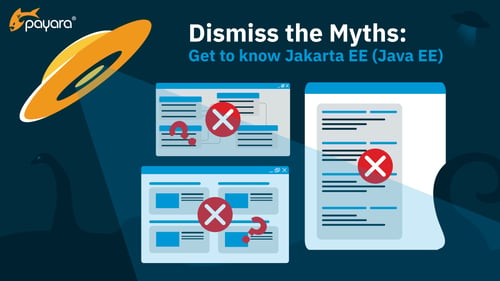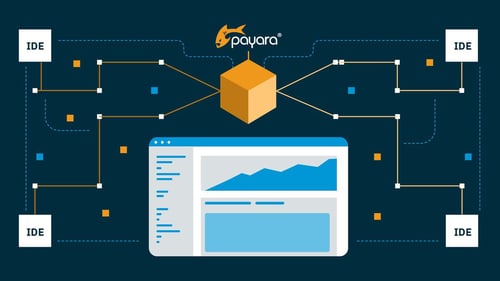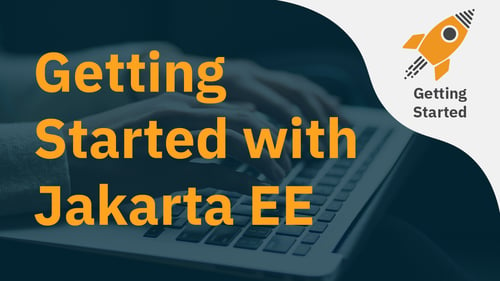Posts tagged getting started with Jakarta EE (2)
New Webinar Series! Dismiss the Myths: Get to Know Jakarta EE
Published on 14 Jun 2021
by Priya Khaira-Hanks
Topics:
Java EE,
JakartaEE,
getting started with Jakarta EE
|
0 Comments
Last week, we announced our exciting new webinar series, 'Dismiss the Myths: Get to Know Jakarta EE (Java EE). This is a series of 6 webinars, every Wednesday at 3.00pm BST for the next 6 weeks - with the first one taking place this Wednesday!
Our CEO and FounderSteve Millidge is leading this series, taking one common misconception about Jakarta EE ( previously Java EE ) at a time. Turns out, you might be wrong in thinking Java is behind the times...
This is also the perfect webinar series if you have heard Jakarta EE or Java EE mentioned but aren't sure what it is, what the namespace change means or where its future lies. Steve will be catering to users who are new to the technology as well as long-time Jakarta EE developers.
Getting Started with Jakarta EE 9: Context And Dependency Injection (CDI)
Published on 18 May 2021
by Rudy De Busscher
Topics:
JakartaEE,
getting started with Jakarta EE
|
0 Comments
In this series about getting started with Jakarta EE 9, we look at various specifications and how you can use them for your next application. In the previous blogs of this series, we set up our development environment and had a closer look at implementing REST endpoints.
This time, I will explain a few features of Context and Dependency Injection (CDI). The CDI specification is an important backbone of Jakarta EE as it brings several specifications together. Over the years, it became more and more important as an increasing number of specifications started using CDI as the basis for it.
In this blog, I will tell a bit about the different scopes, the interceptor mechanism, and the Event system.
Create a Jakarta EE 8 Web Application with Payara Server and Visual Studio Code
Published on 01 May 2021
by Rudy De Busscher
Topics:
Payara Server 5,
JakartaEE,
getting started with Jakarta EE
|
0 Comments
Getting Started with Jakarta EE 9: How to Create a REST API with Jakarta EE 9
Published on 13 Apr 2021
by Rudy De Busscher
Topics:
getting started with Jakarta EE
|
11 Comments
In this second blog of the "Getting Started with Jakarta EE 9" series, we show you some basic Jakarta REST API usage scenarios. Most people are using the term REST or RESTful API just to indicate they do data transfer over HTTP, ignoring the "Hypermedia as the engine of application State (HATEOS)" part of REST.
The technology is used a lot lately to connect the front-end with the back-end. For Jakarta EE 10, read our Getting Started with Jakarta EE 10 blog.
Getting Started with Jakarta EE 9: Hello World
Published on 18 Mar 2021
by Rudy De Busscher
Topics:
JakartaEE,
Payara Platform 5,
getting started with Jakarta EE
|
0 Comments
Introduction
The release of Jakarta EE 9, at the end of 2020, was in many ways a historic event. The Java Enterprise framework is already 20 years old, having its first release in 1999. It has changed names a few times but the main concepts of the first release can still be found in this new release. During all those years, it has adapted itself to keep it up to date but has always adhered to its main principle of stability and backward compatibility.

.jpg?width=500&name=Getting%20Started%20with%20Jakarta%20EE%209%20Context%20Dependency%20Injection%20(CDI).jpg)

.png?width=500&name=MicrosoftTeams-image%20(46).png)
